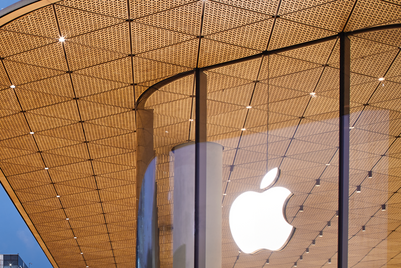
Xiaomi, often referred to as "China's Apple" has taken a fresh approach with brand-building in China. And its efforts could have marketers worldwide rethinking their approach to branding.
Xiaomi is among a group of companies in China (including SmartCar and Mini) which has pioneered a flash-sales technique called a 'snap-up'. A snap-up is built around a sales event usually scheduled one month in the future, where a limited number of products will be sold at a discount (and/or together with rewards).
But rather than just announcing a flash sale, putting the products out, and hoping for the best, Xiaomi has built in a number of steps that make the process more fun, more frenetic, and much more effective for sales—and branding.
Commitment, Xiaomi-style
With a sale scheduled for one month out, the company starts promoting the upcoming sale and asking consumers to first register themselves by binding their bank cards to the site where the event is taking place (Tmall, WeChat, Qzone, etc). This registration starts three weeks from the sales event.
The next step, taking place two weeks from the sale, is asking registered participants to make a deposit or a commitment by taking some other action, like answering a question. This registration reserves an opportunity for participation in the sales event. The deposits are very small (RMB0.01 to RMB1.00), but they ensure that participants are committed. It's an important step in the process as it ensures that they already have "skin in the game”. It lubricates the path for the final sale by making sure that participants already have some vested interest.
A March 2014 snap-up campaign for Xiaomi inside of Qzone, for example, had 419,000 participants secure reservations for 300,000 available products.
Xiaomi has experimented with many ways to handle the sales event itself. But it usually involves having participants compete to get into the sale during a few time slots, with each time slot having a limited number of products on offer. When the sales clock hits a pre-arranged time, participants must be present to enter the sale. Once into the sale, it's a simple, fun process of confirming the purchase and selecting full-priced accessories and apps to bundle with the discounted product.
The whole process of a snap-up campaign helps create a routine between consumers and Xiaomi, which continues after the purchase through social media, weekly updates to its software (a modified version of Android), and connections to its app store.
Standing on the side of consumers
Snap-up sales are designed to be marketing events, raising awareness for the brand and signalling to the market that Xiaomi is a hot product. It might seem a little bit false and manufactured when compared to the overnight lineups Apple’s new product releases have inspired. However, Xiaomi is creating a good quality product at a price that matches a much larger part of China’s urban working class—at prices one-third of Apple's. They have built a distinct cool factor along the way, by being more closely in sync with China’s youth.
Because it is more closely aligned with the needs of consumers in China, young online consumers in China care about and respond to the brand. They are being treated really well by a Chinese company that understands the interest they have in technology, design, fashion, media and pricing. These consumers have responded well, not only by snapping up a lot of Xiaomi products but also by helping to design and shape new products with the company. The brand is quickly becoming about co-creation, which links it even more tightly with the interests of its core market.
Xiaomi already sells more phones than Apple in China and is looking to widen its lead. It has a sales goal of 60 million smartphones this year and looks set to exceed that, as it sold 26.1 million during the first half.
A more dynamic product lifecycle?
What's most interesting about Xiaomi’s snap-ups is the way they could reshape the product sales cycle in their category. The path to purchase for a smartphone is relatively long, and the frequency of repurchase is very long (a couple of years on average). For most smartphone producers the complete product life cycle might be three to four years for any given model—when you include R&D and manufacturing.
Xiaomi's approach to marketing and sales is not just about price promotions. It also enables fast incremental improvement on previous models, with flash sales of a relatively small number of units leading to R&D for the next speedy, incremental improvement—taking customer insights into account along the way.
By selling almost exclusively online with small batches per sale, the company has dramatically reduced the time to market and the costs of carrying/distributing unsold inventory. Savings on marketing are also significant, as the company's efforts can be focused around concentrated, regular sales bursts, rather than on blanket coverage. As a result, Xiaomi spends only 1 per cent of revenue on marketing, where competitors like Samsung assign 5 per cent or more.


.jpg&h=334&w=500&q=100&v=20250320&c=1)


.png&h=334&w=500&q=100&v=20250320&c=1)




.png&h=334&w=500&q=100&v=20250320&c=1)


+(900+x+600+px)+(2).jpg&h=268&w=401&q=100&v=20250320&c=1)

.png&h=268&w=401&q=100&v=20250320&c=1)
.png&h=268&w=401&q=100&v=20250320&c=1)


